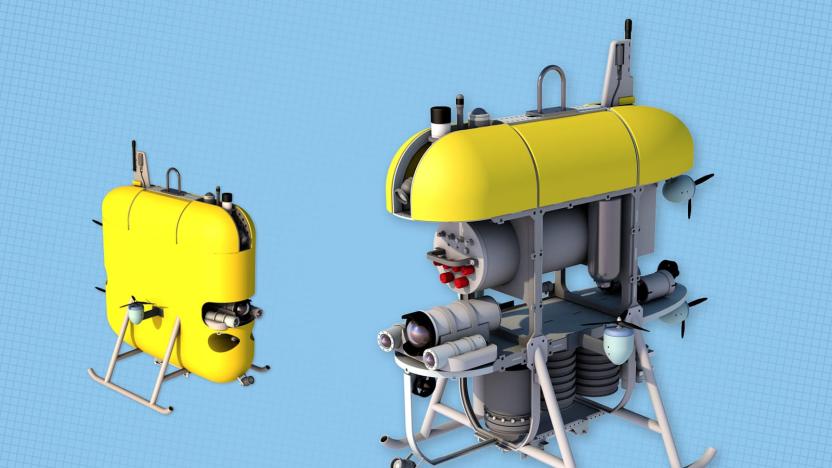whoi
Latest

Sneaky deep sea robot will take pics of fish without spooking them
Robots typically aren't good choices for studying deep sea animals like jellyfish -- not when their light, noise and movement can scare away those creatures. Researchers at Woods Hole Oceanographic Institution may have a far less intrusive option, though. Their planned Mesobot observer is designed to move as quietly as possible while collecting data about aquatic life. The four-foot-tall robot moves using six large but low-power thrusters that won't cause a stir, and its LED lights can switch to red (which many deep sea species can't see). A two-day running time should also minimize attention-getting trips to the surface.

Someone in China has hacked the Woods Hole Institute
The Woods Hole Oceanographic Institution, one of America's premiere scientific research centers, was reportedly hacked last June by unidentified forces operating in China. According to a staff letter sent by WHOI President and Director Mark Abbott this week, the institute has so far found that only emails and commercial data have been tampered with. While the WHOI does a lot of classified research for the US Navy, an institute spokesman points out that sensitive data is stored on a network separate from the one that was attacked.

Oceanographers invent device that tracks even the tiniest jellyfish
With barely two percent of the seafloor explored, we know a whole lot less than we'd like to about the Earth's oceans and its myriad of residents. Among the more numerous but less studied oceanic animals are soft-bodied like squid, octopi and jellyfish. However thanks to a new tracking tag technology developed at the Woods Hole Oceanic Institute, marine biologists will be able to observe these delicate denizens of the deep as they never have before.

Robotic Nereus submarine aims to explore the depths of Challenger Deep
Robotic submarines have already achieved some pretty impressive feats of submersion, but this new Nereus sub developed by the folks at the Woods Hole Oceanographic Institution looks set to out-do those in a fairly big way, with it now on track to dive down into all 11,000 meters of the Challenger Deep in the Pacific Ocean. What's more, while the sub can be operated remotely, it also has a fully autonomous mode, which'll let it make use of the on-board chemical sensors, sonar, and digital photography to seek out areas of interest and map out "vast swathes of the seafloor" before returning to the ship automatically. As you might have guessed, all of that comes at a fairly hefty price tag -- about $5 million -- and it seems like may only be the first of a flood of robotic submarines to come, with British, French, Russian and Japanese teams said to be watching the Nereus' progress "with interest." It doesn't look like they'll have to wait all that long for the big show, however, as the sub is apparently now starting to undergo a series of progressively difficult test dives in advance of the main event planned for late May or early June.


